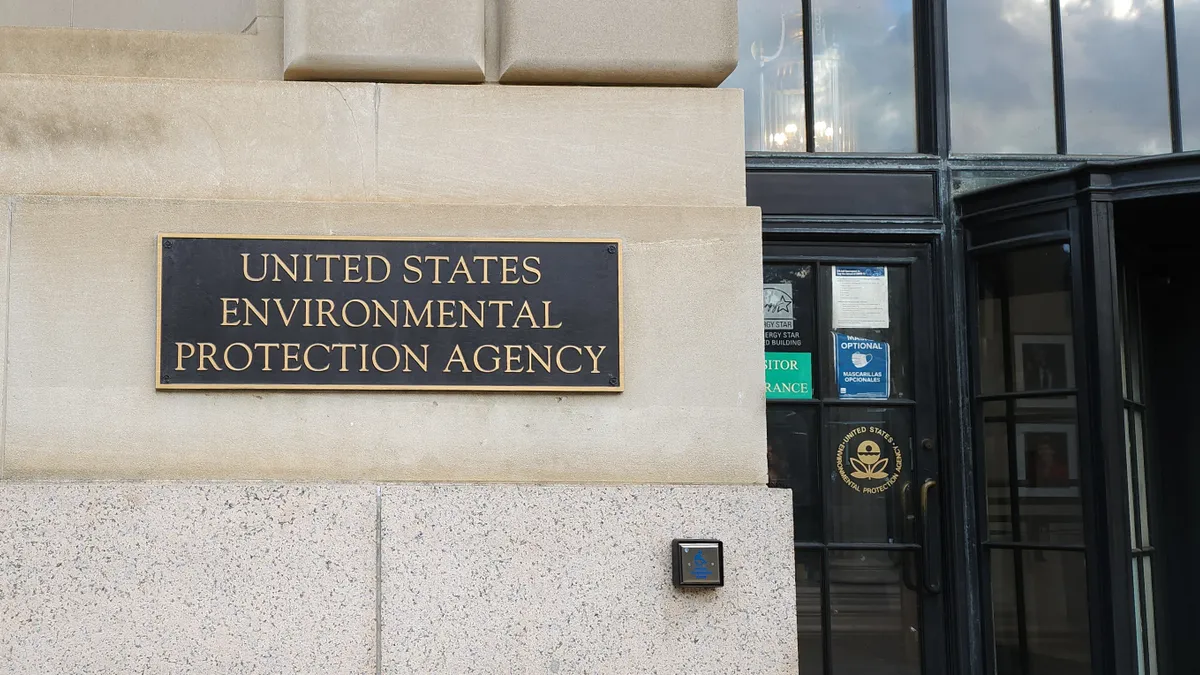Jennifer Danis is the federal energy policy director of the Institute for Policy Integrity at NYU Law School, where Dena Adler is a senior attorney.
Roughly 1,800 regulators and other energy professionals gathered for the National Association of Regulatory Utility Commissioners’ Winter Policy Summit last week where state and federal regulators had a lot to say about the clean energy transition, grid reliability and new EPA rules. On a panel with state public utility commissioners, EPA’s Air Office lead, Joseph Goffman, discussed how to navigate greenhouse gas pollution-reduction rules while maintaining adequate energy resources during the energy transition. He also listened to their concerns about the transition’s pace and scope.
EPA seems to be taking these concerns seriously, even though anticipated reliability challenges stem from many forces other than pollution-control rules. The agency has also reportedly delayed finalizing its GHG emissions limits for existing natural gas-fired power plants to pursue a multi-pollutant approach that will be more protective of frontline communities. EPA Administrator Michael Regan said that EPA would take “a new, comprehensive approach to cover the entire fleet of natural gas-fired turbines” that would be “stronger,” “more durable” and “achieve greater emissions reductions” than the initial proposal.
EPA can finalize and strengthen its public health protections — and it can do so without sacrificing a reliable grid. A wide range of entities must work together to manage reliability, and EPA is already paving the way for this cooperation.
Complementary responsibilities
Many different reliability entities, including the Federal Energy Regulatory Commission, state utility commissioners and others, possess the tools and authorities/responsibilities to manage reliability effects of a shifting energy landscape. They are already leveraging these tools to respond to energy generators’ changing decisions around operations and market entry and exit in response to the energy transition. And they have pathways to improve those tools to address new electric-grid challenges and any incremental reliability effects of EPA’s rules.
Meanwhile, EPA can fulfill its own pollution-reduction responsibilities and support the work of reliability-related entities by incorporating flexibility into its regulations, as it has done in the proposed GHG limits. EPA has a long track record of reducing pollution without undermining the work of the entities for which reliability is their bread and butter. In a new report, we discuss EPA’s pollution-reduction responsibilities, the reliability responsibilities of FERC and other entities, and the respective pathways for them each to support a cleaner and more reliable grid.
Addressing the effects of the broader energy transition
While pollution control rules alter the costs of doing business and so by their nature affect the generation mix, other ongoing changes are more significant drivers of the energy transition. For example, the landmark 2022 Inflation Reduction Act, together with myriad climate policies at nearly all levels of government, is accelerating sectoral shifts already underway due to changing market conditions, plummeting renewables prices and the replacement of aging coal-fired power plants with cheaper, more efficient resources. Concerns that EPA’s GHG limits and other pollution-control rules will significantly affect reliability suffer from tunnel vision that obscures these wider effects — and the work being done by a web of actors from state utilities commissions to regional grid planners to address them.
The village of reliability-related entities requires a big table. FERC has the mandate and corresponding tools to ensure reliability of the bulk power system and just and reasonable rates during the clean energy transition. But FERC works together with its governed reliability entities, utilities, PUCs and other state actors to accomplish this goal because they have complementary influence over generator entry and exit and other operating decisions. Maintaining grid reliability through the challenges of the evolving transition will require appropriate coordination among grid planners, regulators, operators and state energy and environmental regulators, including about how best to implement EPA’s pollution-reduction rules.
To support these entities’ work, EPA has designed a set of rules with several implementation flexibilities, including the creation of subcategories with no emissions limits, long lead times for compliance, and state discretion in creating implementation plans for existing sources. Should state energy and environmental regulators, operators and others implementing the final rules find those flexibilities insufficient, additional flexibilities are available. The Clean Air Act allows further leniency for individual, existing facilities through the “remaining useful life and other factors” provision and wider leniency through administrative enforcement discretion or emergency exception mechanisms. These flexibilities allow EPA to meaningfully answer concerns about energy adequacy without reducing its regulations’ stringency.
Moving forward
Through conscientious regulatory design, technical conferences and conversations like the one at the NARUC summit, EPA is fulfilling its responsibilities to coordinate with regulators and ensure that its rule compliance exemptions and other implementation flexibilities provide sufficient leeway for them to do their job. FERC, RTOs/ISOs, state regulatory bodies and vertically integrated utilities must now handle their pieces of the puzzle. They have already developed some tools to address both extreme weather impacts and clean energy resource integration, including mechanisms to enhance energy adequacy, grid capacity expansion and reliable grid operations. But they must refine and supplement these tools (including by pursuing more holistic modeling techniques for transmission planning).
NARUC’s winter summit showcased a wide array of state utility regulators’ efforts and conversations around ways to bolster these tools. EPA can move forward expeditiously to protect public health and limit GHG emissions from the full suite of fossil fuel-fired power plants — including existing gas-fired power plants — as it continues to work alongside these ongoing grid transformation efforts. The agency has provided regulatory flexibility and a suitable compliance runway to implement GHG limits for fossil fuel-fired power plants. Now the reliability-related entities must plow forward to ensure reasoned market entries and exits in light of the many economic incentives and market forces operators face.






















